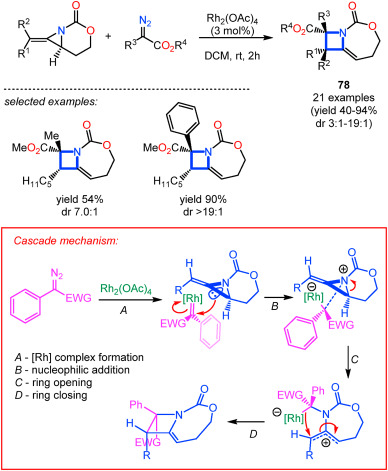
# Surmounting Bredt’s Rule: Innovative Strategies Unveil the Possibilities of Bridgehead Olefins
For more than a hundred years, **Bredt’s Rule** has posed a formidable obstacle for chemists striving to produce **bridgehead olefins**—a category of alkene located at the intersection of two or more fused ring structures. Established by **Julius Bredt** in 1924, this principle asserts that such alkenes are unattainable due to the considerable geometric and strain limitations imposed by smaller ring systems. The bridgehead configuration constrains the double bond into a non-planar arrangement, resulting in instability and a predisposition to rapid, undesirable side reactions. As a result, bridgehead olefins, especially **anti-Bredt olefins** (ABOs), have remained largely theoretical, challenging to synthesize and regarded as chemically inaccessible.
Nevertheless, two pioneering research teams have recently shattered these enduring limitations. These groups, by employing creative synthetic methods, have successfully synthesized bridgehead olefins, broadening the horizons of organic chemistry and enhancing the accessibility of chemically important molecules for uses such as drug development.
## Defying Bredt’s Rule: Neil Garg’s Method for Anti-Bredt Olefins
A notable advancement originates from **Neil Garg**’s research team at the University of California, US. Garg’s team devised a technique to synthesize anti-Bredt olefins via precursor molecules featuring **silyl-substituted groups**, which incorporate **trimethylsilyl (TMS)** into a bicyclic framework. By utilizing **triflate** (trifluoromethanesulfonate) as a leaving group and reacting the system with **tetrabutylammonium fluoride (TBAF)**, Garg’s team was able to generate the strained bridgehead intermediate under mild conditions, effectively overcoming traditional obstacles presented by Bredt’s Rule.
> “You create a silicon–fluorine bond, which is robust, and then you have a highly reactive leaving group,” Garg elaborates. “This combination enables the formation of the strained [bridgehead] intermediate,” facilitating the pursuit of an elusive synthetic goal under controlled conditions.
Upon formation, these anti-Bredt olefins were stabilized using various reagents, allowing researchers to isolate intricate structures that were previously unattainable. By further developing these strategies, Garg’s team made these peaks of synthetic difficulty, the **ABOs**, accessible for broader application. For the first time, chemists could genuinely consider anti-Bredt olefins in their larger synthetic strategies.
### Chirality: An Essential Characteristic of Anti-Bredt Olefins
In contrast to conventional alkenes, which are typically non-chiral or exhibit planar symmetry, anti-Bredt olefins are **chiral** molecules. This indicates that their molecular arrangements do not perfectly align with their mirror counterparts, a feature that is highly valued in **pharmaceutical synthesis** as it permits the creation of stereochemically defined medications.
Garg’s team advanced this further by capturing an **enantiomerically enriched** anti-Bredt olefin, thus affirming that the chiral properties of a precursor can be transferred to the final product. This progress is regarded as a major advancement in the study of strained intermediates.
> “[This research] represents a significant advancement for the domain of strained intermediates … These highly reactive intermediates have long been challenging to utilize, but Garg and his collaborators have paved the way for their broader application,” states **Courtney Roberts** from the University of Minnesota, US, who is addressing similar issues with reactive ring systems like arynes.
## Hyperstable Alkenes: The Complementary Endeavor of Craig Williams
In parallel with Garg’s contributions, another thrilling development emerges from **Craig Williams** and his team at the University of Queensland, Australia. Williams’ group responded to the inverse challenge: accessing **hyperstable alkenes**. These compounds, typically found in **cage-like** bicyclic systems, resist the strain commonly associated with more reactive anti-Bredt olefins. Theoretical analyses indicated these alkenes would exhibit remarkable inertness, due in part to minimal strain exerted on their double bonds.
Employing a technique that involved ring expansion with boron intermediates, Williams’ team successfully synthesized four distinct bicyclic hyperstable alkenes. Notably, while these compounds were anticipated to be entirely unreactive, they unexpectedly showed reactivity under certain conditions, especially during oxidative reactions.
> “The unanticipated emergence of a bicyclo[4.4.3] system felt like two Christmases arriving at once—it propelled the research to a new height,” remarks Williams. However, he notes that the method encounters challenges as the ring sizes increase, introducing further strain into the structure.